Demonstration Rain Garden
The rain garden near Kwalikum Secondary School is still functioning well and looking beautiful. Rain gardens receive and treat storm water as it rushes off parking lots and roads toward the nearest watercourse - in this case, Beach Creek. The fish are spared the harmful chemicals and the excess of runoff during winter storm events that causes erosion and other habitat degradation in the creeks. The other side of the coin is, the water is allowed to seep into the ground where it belongs - recharging the aquifers and keeping creeks flowing in the summer.
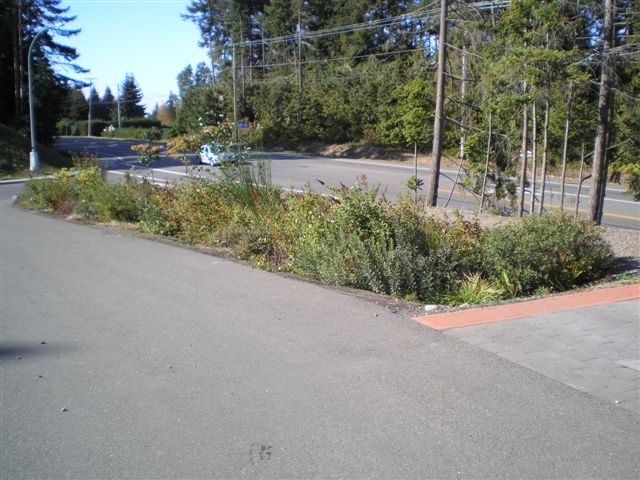
This project was made possible by the Town of Qualicum Beach, the Pacific Salmon Foundation, TD Friends of the Environment, MVIHES, and volunteers from Qualicum Beach Streamkeepers and Kwalikum Secondary students.
The purpose of the rain garden is to absorb rainwater run-off from impervious surfaces (roofs, roadways, sidewalks, and even compacted lawns), minimizing the amount of water entering the sewer system directly. Stormwater instead soaks into the ground, which acts as a filter and reduces the levels of polluntants that reach our streams, while minimizing surface waters that can cause erosion, water pollution, flooding and diminished ground water.
The following series of photos depicts the construction process used to create the rain garden.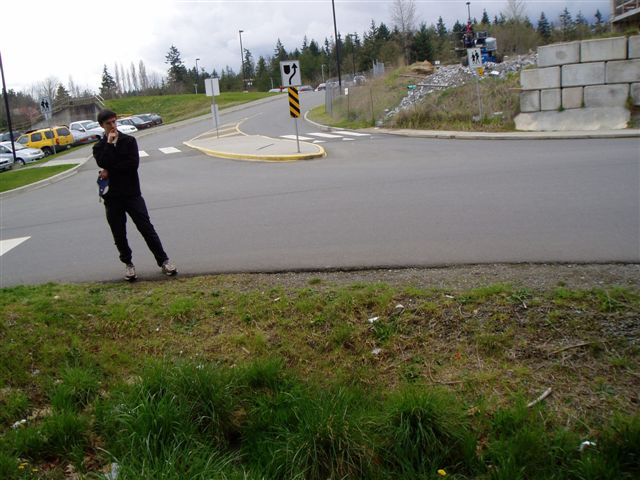
The site choosen for the demonstration rain garden pre-construction. The high school parking lot is behind, and the apartment complex is on the right.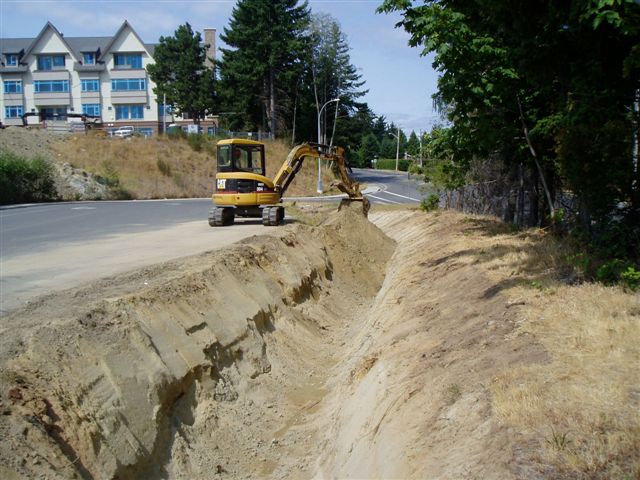
The initial excavation was done in May 2007, but construction did not continue until October 2007,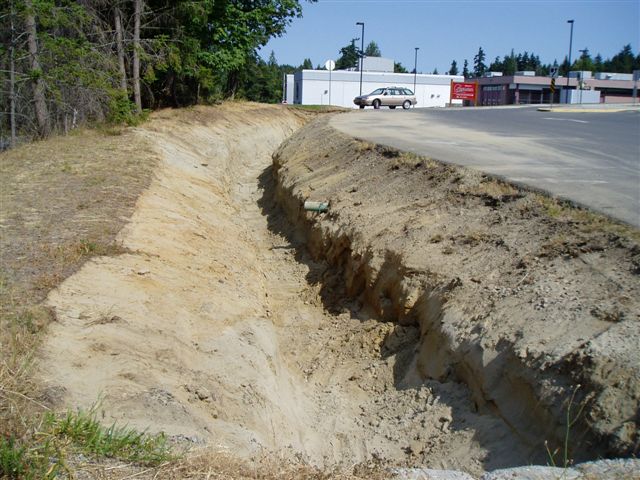
Note the inlet pipe from the apartment complex, directing water into the rain garden.
This is the inlet from the school parking lot.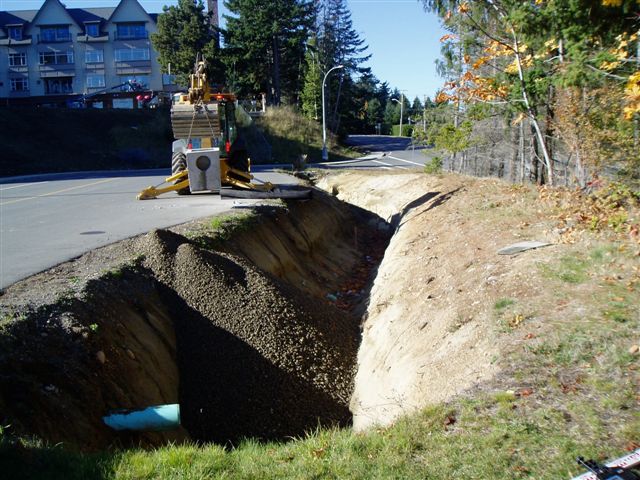
One meter of crushed rock being added.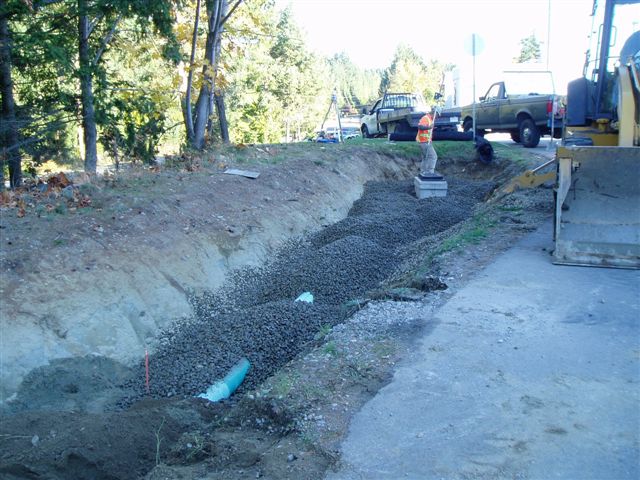
Note the drainage pipe under the future grassy swale.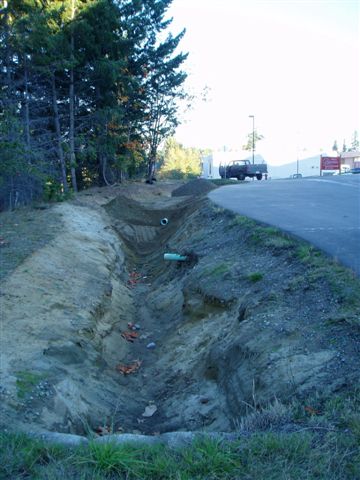
A layer of mixed sand and compost is laid next.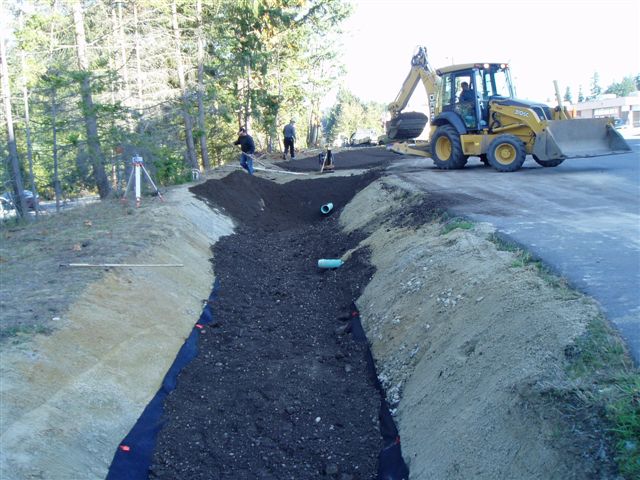
Note the filter fabric placed under the sand/compost.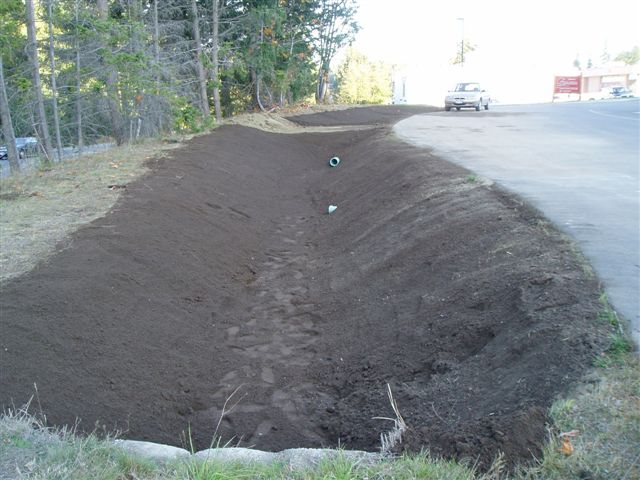
The rain garden is ready for planting with native plants. The ideal plants are usually a selection of native wetland edge plants able to tolerate the water in the wet season yet live through the dryer months of the summer.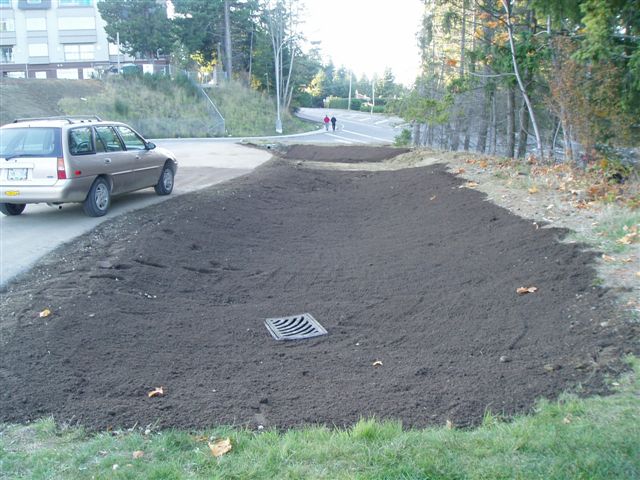
A view from the top end, the grassy swale. Surface run-off not absorbed in the garden will be slowed significantly due to the swale, thus reducing sediment load and pollution downstream, 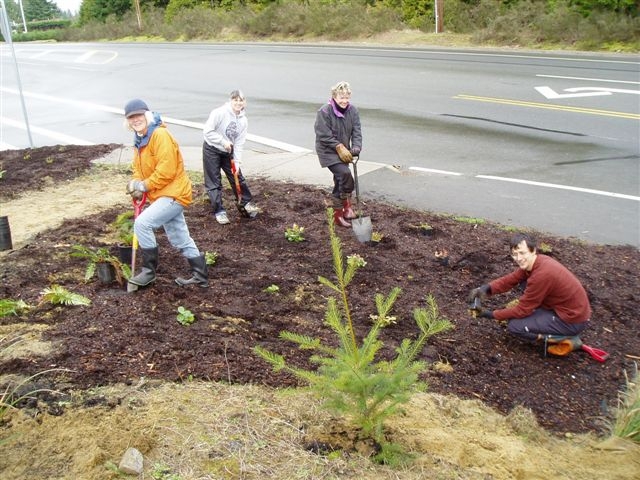
Native plants are a good choice for rain gardens because they require little fertilizer and are accustomed to the local climate, soil and water conditions. The plants have a multi-purpose role in the rain garden absorbing excess water while their roots aid in infiltration and moisture redistribution, and provide a diverse microbial population. Plus, through transpiration, the plants return water to the atmosphere. 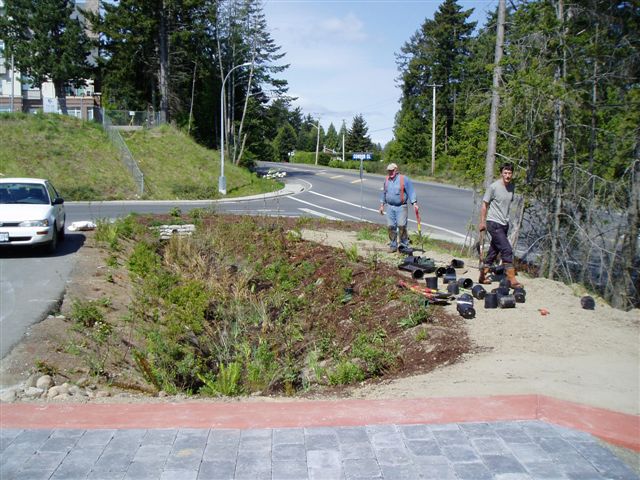
Note the pervious paving stones on the compacted berm and overflow pipe at the far end.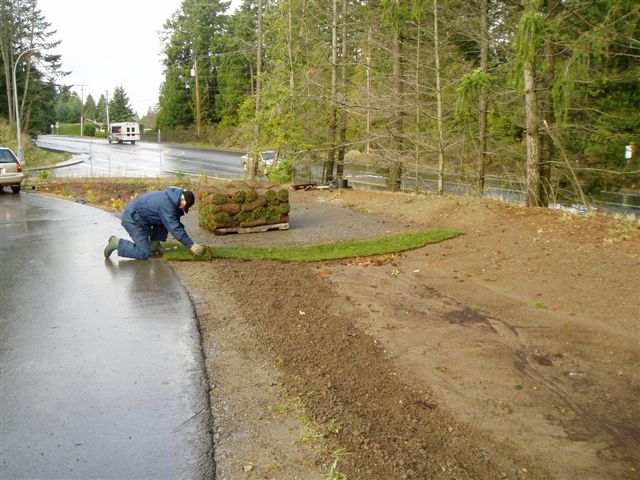
Laying the turf on the swale.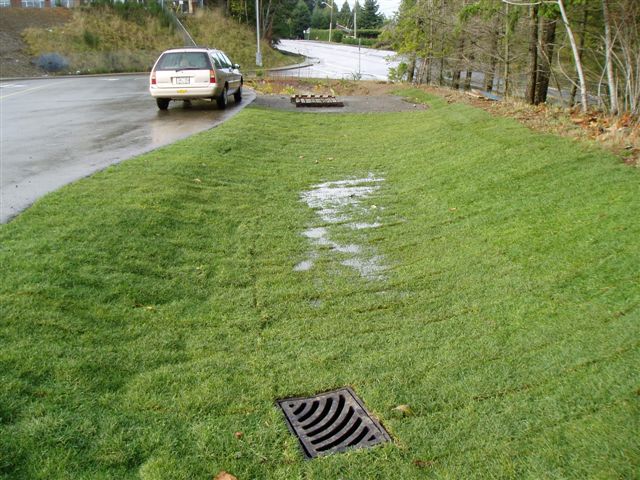
The finished swale.